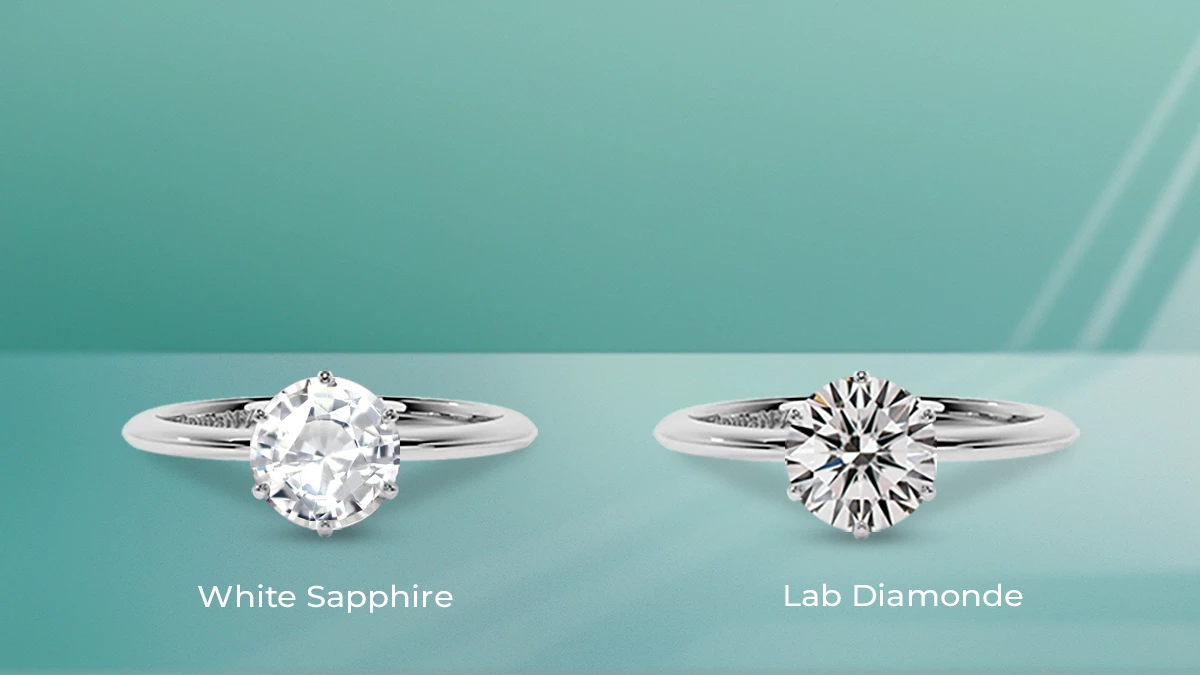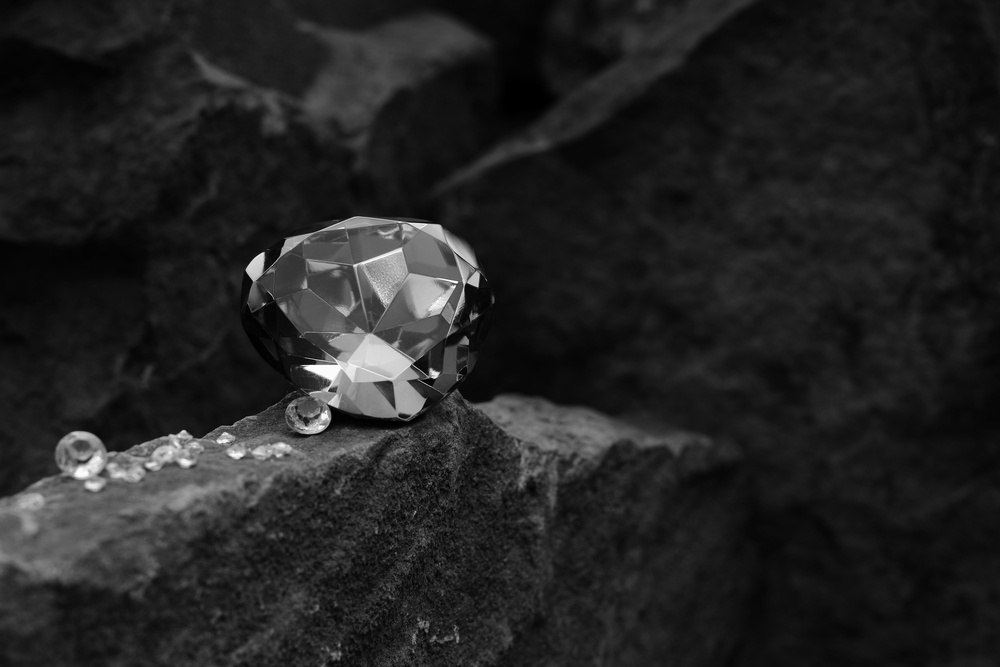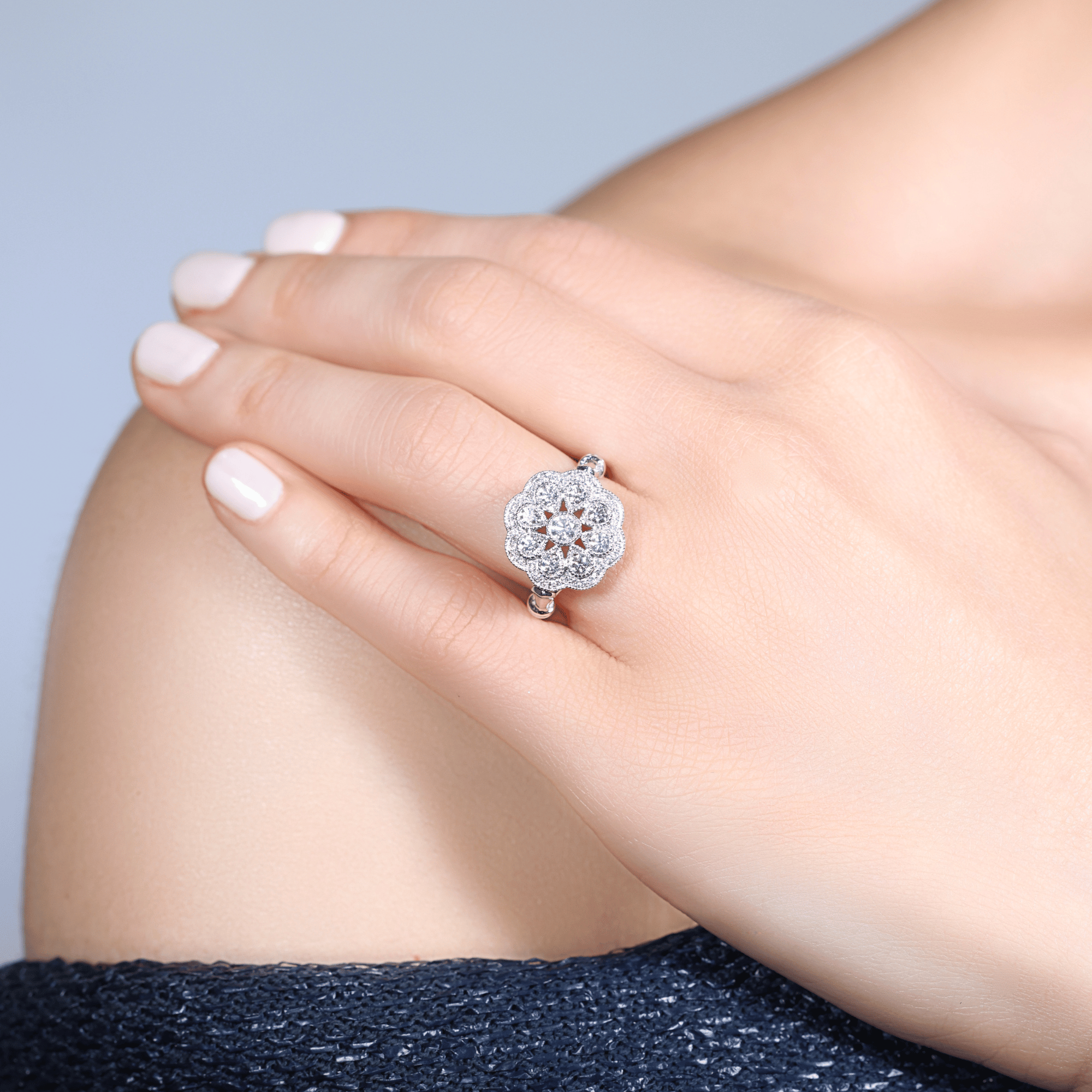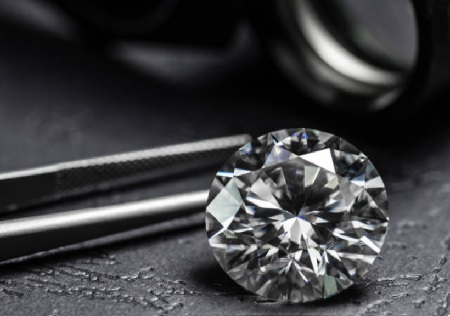
When it comes to choosing gemstones for jewelry, particularly engagement rings, two of the most popular choices are white sapphires and diamonds. While both stones are visually striking and can serve as symbols of love and commitment, there are important differences between the two. Additionally, the emergence of lab-made diamonds has introduced a new layer of complexity to the decision-making process. In this article, we will compare white sapphire vs diamond, focusing on their features, qualities, and the growing trend of lab-made diamonds.
Table of Contents
ToggleWhat Is a White Sapphire?
White sapphires are a type of corundum, a mineral that is naturally found in a variety of colors. White sapphires, unlike their blue counterparts, are colorless and are often chosen for their similar appearance to diamonds. They possess remarkable hardness, ranking 9 on the Mohs scale, just below diamonds, which are ranked at 10. This makes white sapphires a durable option for jewelry, though they do not possess the same brilliance or fire as diamonds. White sapphires are a popular choice for those seeking a more affordable alternative to diamonds without compromising on visual appeal.
What Is a Diamond?
Diamonds are formed under extreme pressure and temperature deep within the Earth’s mantle, and their unique structure gives them their unmatched brilliance. A diamond’s hardness, combined with its clarity and cutting ability, makes it one of the most desirable gemstones for engagement rings and fine jewelry. Diamonds are rated on a scale known as the 4 Cs—cut, color, clarity, and carat weight—factors that influence their price and value. Unlike white sapphires, diamonds have a natural sparkle and a distinct fire that enhances their visual appeal.
White Sapphire vs Diamond: Durability
When comparing white sapphire vs diamond in terms of durability, diamonds hold a clear advantage. Diamonds are the hardest natural material on Earth, scoring a perfect 10 on the Mohs scale. This means that diamonds are highly resistant to scratches, making them ideal for daily wear, especially in engagement rings. White sapphires, while still very durable with a hardness of 9, are more prone to scratching than diamonds. Over time, a white sapphire might show signs of wear, particularly in settings that involve regular friction, such as rings.
However, white sapphires still maintain a good level of durability, and they are suitable for jewelry pieces that aren’t subject to constant wear and tear. For those looking for an affordable yet durable gemstone, a white sapphire may be the right choice, provided the piece is well cared for.
White Sapphire vs Diamond: Appearance and Brilliance
One of the most significant differences between white sapphire and diamond is their brilliance. Diamonds are famous for their intense sparkle, which is the result of their unique crystal structure and the way they interact with light. The facets of a diamond reflect light in a way that produces a rainbow of colors, commonly referred to as “fire.” This brilliance is often one of the main reasons people choose diamonds, particularly for engagement rings.
On the other hand, white sapphires, despite being colorless, do not exhibit the same level of brilliance or fire. While they can still appear sparkling and attractive, their light reflection is less intense than that of diamonds. Therefore, if you’re seeking a gemstone with superior sparkle and fire, diamonds are the clear choice.
Lab-Made Diamonds: A Modern Alternative
In recent years, lab-made diamonds have become increasingly popular as a sustainable and ethical alternative to natural diamonds. Lab-made diamonds are created using advanced technology to replicate the conditions under which natural diamonds form. These diamonds are chemically, physically, and optically identical to their mined counterparts, offering the same brilliance, fire, and durability at a fraction of the cost.
Lab-made diamonds are often seen as a way to avoid the environmental and ethical concerns associated with traditional diamond mining. They are grown in controlled environments using either High Pressure High Temperature (HPHT) or Chemical Vapor Deposition (CVD) methods, ensuring that each diamond meets the highest quality standards. As a result, lab-made diamonds offer a similar appearance and durability to mined diamonds, making them a compelling option for those who prioritize ethical and environmental considerations in their purchasing decisions.
Price Comparison: White Sapphire vs Diamond
When it comes to pricing, there is a notable difference between white sapphires and diamonds. White sapphires are generally much more affordable than diamonds, sometimes costing a fraction of the price. This makes them an attractive option for individuals who want the look of a diamond but at a lower price point.
Diamonds, on the other hand, can be quite expensive, especially when considering the 4 Cs—cut, color, clarity, and carat weight. Lab-made diamonds are often more affordable than natural diamonds, offering the same benefits without the hefty price tag. While still more expensive than white sapphires, lab-made diamonds present a cost-effective alternative for those seeking the qualities of a traditional diamond without the environmental impact.
White Sapphire vs Diamond: Ethical and Environmental Considerations
Another important factor to consider when choosing between white sapphires and diamonds is the ethical and environmental impact of the gemstone. Traditional diamond mining has long been associated with environmental degradation, including soil erosion and water contamination, as well as human rights concerns, particularly in regions with conflict diamonds.
Lab-made diamonds, however, offer an ethical and environmentally friendly alternative. Since they are grown in a controlled laboratory setting, lab-made diamonds do not contribute to the same environmental or ethical issues as mined diamonds. This makes them a popular choice for consumers who are conscious of their purchasing decisions.
In comparison, while white sapphires are ethically sourced, they still do not hold the same ethical weight as lab made diamonds, which have a more transparent and sustainable production process.
Conclusion
In the debate of white sapphire vs diamond, both stones offer their own unique advantages. White sapphires are an affordable and durable option that mimics the look of diamonds, making them ideal for those on a budget. However, when considering brilliance and long-term durability, diamonds—whether natural or lab-made—are the superior choice. Lab-made diamonds provide an ethical, sustainable, and cost-effective alternative to mined diamonds, making them an increasingly popular choice for modern consumers.
Ultimately, the decision between white sapphire and diamond depends on your priorities—whether it’s budget, appearance, durability, or ethical considerations. Regardless of your choice, both stones can make beautiful and meaningful additions to your jewelry collection.





